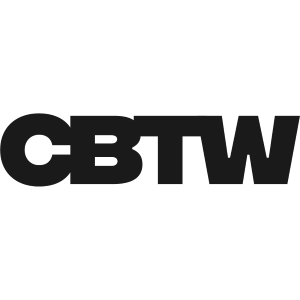The outsourcing debate has changed.
For leaders, cost is no longer the deciding factor. Speed, trust, and quality are.
That’s why nearshoring (building delivery capacity closer to home) isn’t just about filling gaps anymore. It’s about building value that evolves with your market and strengthens your business long-term; and turning it into a strategic advantage.
Why North American Fintechs Are Turning to Nearshoring
1. Real-time collaboration
While some offshore destinations may offer lower starting costs, these can sometimes come with added coordination challenges and time zone gaps. Nearshore teams in Latin America, on the other hand, share similar working hours with product teams in the U.S., Canada, and Mexico – enabling faster feedback loops, smoother collaboration, minimal culture gap, and more agile decision-making.
2. Access to high-quality talent
Latin American talent is maturing rapidly. The region now offers bilingual, fintech-savvy professionals who combine technical expertise with domain expertise. From engineers mastering the most in-demand stacks to creative designers and product specialists with international exposure, the talent pool is deeper and more divers than many realize.
At the same time, the fintech market in Latin America is expanding rapidly, fueled by digital banking adoption, smartphone penetration, open banking regulation, and rising demand for inclusive, digital-first financial services

3. Value-for-Work Efficiency
While some offshore hubs remain cheaper, rising salaries and fierce competition, especially in markets like India, have pushed up costs and turnover. Latin America may cost slightly more, but it remains far more competitive than North America.
The difference isn’t just price, it’s how work gets done. Greater overlap in working hours, easier communication, cultural proximity, and strong engagement make collaboration smoother and more committed. This translates into faster delivery. Well-managed nearshore teams consistently deliver greater value per dollar through speed, continuity, and knowledge retention.
Moving Beyond Outsourcing
The outsourcing trap is simple: you rent capacity but lose the knowledge. When the team leaves, the know-how leaves with them.
This isn’t only about geography; it’s about the engagement model. Traditional outsourcing, whether offshore or nearshore, keeps teams at arm’s length. Vendors deliver tasks, but rarely integrate fully. The result? Misalignment, churn, and little lasting value.
The Build-Operate-Transfer (BOT) model flips this dynamic. You’re not renting talent; you’re building an asset:
- A team embedded in your culture from day one.
- Knowledge that compounds within your company
- The option to transition into a permanent capability
Companies are increasingly adopting BOT as a smarter alternative to outsourcing. The model reduces upfront setup costs, aligns teams with company culture, preserves control, and builds lasting expertise while keeping the option to insource when the time is right.

Trends Shaping 2026
1. AI-augmented teams
Nearshore teams are evolving from pilots to enterprise accelerators. They’re no longer testing grounds, but the first line of AI adoption, embedding generative AI into the full software development lifecycle. Successful models can then be scaled internally, or companies can acquire the teams themselves, turning experimentation into lasting capability.
2. Domain-specialized squads
Tech companies no longer want generalists. By 2026, fintechs are demanding squads fluent in areas like payment rails, regulatory reporting, Web3, or embedded finance. This shift is moving nearshoring from body-shopping to precision-scaling, where only partners with proven expertise, and the ability to build and scale around it, truly make the difference.
3. BOT as the new M&A entry route
BOT models are increasingly used as low-risk market-entry strategies and even as acquisition pipelines, letting fintechs test a hub in Latin America before deciding to buy or integrate fully. This positions BOT as both a delivery model and a strategic expansion tool.
4. Macro-economics fueling reinvestment
With interest rates stabilizing and capital markets reopening, fintech investment is rebounding. Unlike the “growth at all costs” era, 2026 brings disciplined funding, stronger fundamentals, profitable scale, and faster adoption of AI. Nearshore squads in regulatory-compliant markets stand out as clear options.
5. Working visa reforms reshaping hiring economics
With the U.S. imposing a $100k H-1B visa fee, relocating tech talent is becoming prohibitively expensive. Meanwhile, Canada has hinted at new global-talent initiatives, though measures remain uncertain as the government continues tightening overall temporary resident numbers. Against this backdrop, Latin America hubs stand out as the obvious alternative, offering bilingual engineers who can collaborate seamlessly without immigration bottlenecks.
6. Retention and engagement as competitive moats
Traditional offshore hubs face high attrition. By contrast, firms with embedded nearshore teams treat loyalty and knowledge retention long-term asset. At CBTW Colombia, for example, we’ve maintained an 85% retention rate since inception, proof that cultural fit and engagement deliver more sustainable value than cost-cutting alone.
7. Partnership over vendor contracts
The most successful fintechs treat nearshore providers as partners, co-creating roadmaps, engagement models, and even equity-linked outcomes. Outsourcing can no longer be transactional, it must evolve into a shared journey of growth, with providers expected to meet industry standards such as ISO 27001 and SOC 2.
The Bottom Line
The nearshoring debate is no longer about onshore vs offshore. It’s about who builds the smartest, most resilient operating model for 2026 and beyond.
Nearshoring through BOT in the Americas delivers exactly that: speed, quality, and long-term value creation. For fintechs, that means:
- AI embedded from day one
- BOT as both a scaling and M&A vehicle
- Resilient operating model that can pivot with market shifts
- Access to seamless, bilingual talent without immigration hurdles
Nearshoring in the Americas is no longer a stopgap. It’s the strategic backbone for the next decade of fintech growth.
Offshore cuts cost.
Nearshore strengthens collaboration. Outsourcing adds capacity. Build-Operate-Transfer builds lasting assets.
References:
Times of India – IT Attrition Signals Demand Pickup
QED Investors – Fintech’s Next Chapter: Winners and Disruptors
Reuters – Latin America Fintech Growth
IMARC Group – Latin America Fintech Market
Morgan Lewis – Rise of the BOT Model
Deloitte – Build-Operate-Transfer Service Delivery
White House – Restriction on Entry of Certain Nonimmigrant Workers
Canada.ca – Immigration Levels Plan 2025-2027
